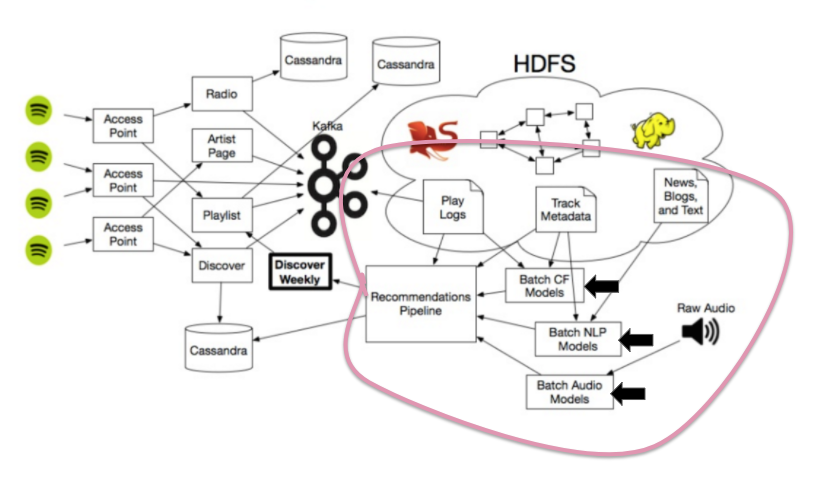- Collaborative Filtering models (i.e. the ones that Last.fm originally used), which analyze both your behavior and others’ behaviors.
- Natural Language Processing (NLP) models, which analyze text.
- Audio models, which analyze the raw audio tracks themselves.

Unlike Netflix, Spotify doesn’t have a star-based system with which users rate their music. Instead, Spotify’s data is implicit feedback — specifically, the stream counts of the tracks and additional streaming data, such as whether a user saved the track to their own playlist, or visited the artist’s page after listening to a song.
根据喜欢的音乐,来归类于相似用户。
In actuality, this matrix you see here is gigantic. Each row represents one of Spotify’s 140 million users — if you use Spotify, you yourself are a row in this matrix — and each column represents one of the 30 million songs in Spotify’s database.
The exact mechanisms behind NLP are beyond the scope of this article, but here’s what happens on a very high level: Spotify crawls the web constantly looking for blog posts and other written text about music to figure out what people are saying about specific artists and songs — which adjectives and what particular language is frequently used in reference to those artists and songs, and which other artists and songs are also being discussed alongside them.
with cnn处理audio部分